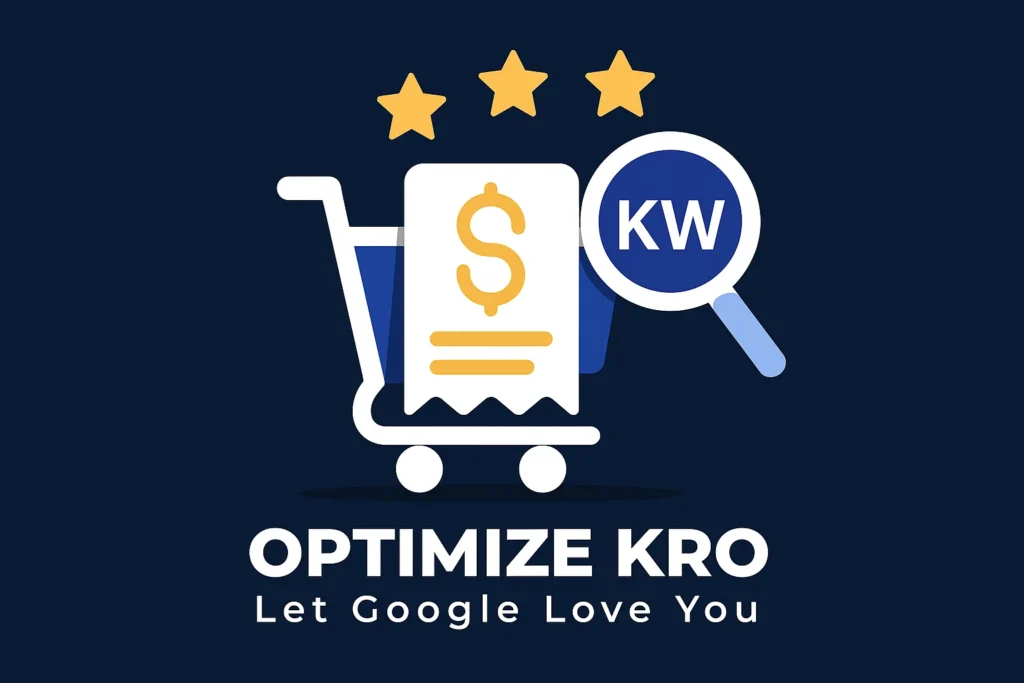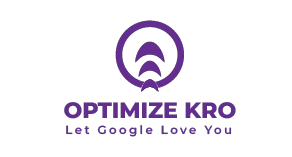In the world of Search Engine Optimization (SEO), one of the critical aspects of understanding how search engines interpret user queries is recognizing the concept of search intent. While many marketers and SEO professionals focus on informational or navigational intent, transactional intent is a crucial aspect that deserves close attention. Transactional intent keywords are specifically designed to target users who are ready to make a purchase, subscribe to a service, or take another form of action. If leveraged effectively, these keywords can significantly boost conversions and drive qualified traffic to your website.
This article will provide an in-depth understanding of transactional intent keywords, how to identify them, how to optimize for them using NLP (Natural Language Processing), and the best strategies to implement for effective SEO. We will also include a table, list, and FAQs to make this article more engaging and easier to follow.
- What Are Transactional Intent Keywords?
- Why Are Transactional Intent Keywords Important in SEO?
- How to Identify Transactional Intent Keywords
- Optimizing for Transactional Intent Keywords with NLP
- Best Strategies for Transactional Intent SEO
- What Our Clients Say
- FAQs on Transactional Intent Keywords
- Q1: What’s the difference between transactional and commercial intent?
- Q2: Can transactional intent keywords be used for service-based businesses?
- Q3: How do I know if my website is optimized for transactional keywords?
- Q4: Is there a difference in SEO strategy for transactional keywords and informational keywords?
- Conclusion

What Are Transactional Intent Keywords?
Transactional intent keywords are search queries that indicate a user is looking to make a transaction. This type of intent is one of the four primary types of search intent, alongside informational, navigational, and commercial investigation intent.
Types of Search Intent
- Informational Intent: The user is seeking information or answers (e.g., “how to cook pasta”).
- Navigational Intent: The user is looking for a specific website or page (e.g., “Facebook login”).
- Commercial Investigation Intent: The user is researching products or services but is not yet ready to buy (e.g., “best smartphones under $500”).
- Transactional Intent: The user is ready to make a purchase or take action (e.g., “buy running shoes online”).
Characteristics of Transactional Intent Keywords
Transactional intent keywords generally fall into categories that indicate an intention to complete an action. These categories include:
- Product-related: Keywords related to products (e.g., “buy iPhone 15 online”).
- Service-related: Keywords related to services (e.g., “hire SEO consultant”).
- Location-based: Keywords where the user intends to complete a purchase near a specific location (e.g., “buy coffee near me”).
- Action-focused: Keywords that include verbs indicating a transactional action (e.g., “subscribe to Netflix”).
Why Are Transactional Intent Keywords Important in SEO?
Understanding and targeting transactional intent keywords is crucial for several reasons:
- Higher Conversion Rates: Transactional intent keywords reflect users who are closer to making a purchase or completing an action. As a result, they typically have a higher conversion rate than other intent types.
- Targeting Ready-to-Buy Audiences: By optimizing for transactional keywords, businesses can focus on attracting an audience that is already interested in purchasing or engaging with their offerings.
- Competitive Advantage: Competing for transactional intent keywords allows businesses to position themselves as a go-to option for customers who are in the final stages of their buying journey.
- Enhanced ROI: As transactional keywords often drive high-converting traffic, investing in SEO for these terms can lead to a more significant return on investment.
How to Identify Transactional Intent Keywords
Identifying transactional intent keywords involves understanding the underlying search patterns of users and recognizing certain signals that indicate an intent to take action.
1. Analyze Keyword Modifiers
Look for specific words or phrases in the query that suggest transactional intent. Common modifiers include:
- Action Verbs: Words like “buy,” “purchase,” “subscribe,” “order,” and “download.”
- Product Terms: Words like “best,” “top,” “cheap,” and “review” when paired with product names.
- Location Modifiers: Terms like “near me” or city names indicating a local search.
- Price-Related Terms: Keywords like “sale,” “discount,” “coupon,” and “deal.”
2. Use Keyword Research Tools
Utilize tools like Google Keyword Planner, SEMrush, or Ahrefs to identify keywords that show signs of high transactional intent. These tools can help you find search volume data, CPC (Cost Per Click), and competition level—indicating that users are likely willing to make a purchase.
3. Examine Search Engine Results Pages (SERPs)
Search the keywords you’re considering in Google and examine the search results. If you notice a lot of product listings, shopping ads, or local business results, that’s a clear indication of transactional intent.
Optimizing for Transactional Intent Keywords with NLP
NLP, or Natural Language Processing, is an advanced method in SEO that focuses on understanding how search engines interpret and rank content. Using NLP can help you create content that better aligns with user intent, leading to improved rankings for transactional queries.
Steps to Optimize for Transactional Keywords Using NLP:
- Understand User Intent at a Deeper Level:
- Use NLP tools like Google’s BERT algorithm or latent semantic indexing (LSI) to understand context and nuances behind transactional keywords.
- Integrate related terms and synonyms to ensure your content is comprehensive and covers different aspects of the search query.
- Match Query with Relevant Content:
- Develop pages that specifically cater to transactional searches. For instance, if you are targeting a keyword like “buy running shoes,” create a landing page or product page that directly addresses the purchase journey.
- Include product descriptions, pricing information, and CTA (Call to Action) buttons to facilitate easy purchasing.
- Leverage Schema Markup:
- Implement Product Schema to highlight product information, reviews, and pricing directly in the search results. This can enhance visibility and increase click-through rates (CTR).
- Optimize for Voice Search:
- With the rise of voice search, transactional queries are becoming more conversational. Ensure that your content is optimized for natural, question-based queries by structuring content with FAQs and answers.
- Create Engaging Calls to Action (CTA):
- Ensure that every page optimized for transactional keywords includes clear, compelling CTAs such as “Buy Now,” “Subscribe Today,” or “Get Started.”
Best Strategies for Transactional Intent SEO
1. Use Targeted Landing Pages
Creating landing pages that are specifically designed around transactional intent can significantly increase conversions. These pages should include:
- High-quality product images or service descriptions.
- Clear CTAs and easy navigation.
- Customer testimonials or reviews to build trust.
2. Focus on Local SEO
If you are targeting transactional keywords for a local audience, ensure that you’re optimizing for local SEO. This includes:
- Creating a Google My Business profile.
- Using location-based keywords in your meta titles, descriptions, and content.
- Encouraging customer reviews to build credibility.
3. Leverage PPC (Pay-Per-Click) Advertising
Since transactional keywords often have high intent, incorporating PPC campaigns targeting these keywords can give you immediate visibility and drive traffic to your site. Use Google Ads or Bing Ads to capture these high-value searches.
4. Improve User Experience (UX)
Ensure that your website is optimized for a smooth user experience:
- Fast page load times.
- Mobile-friendly design.
- Easy-to-navigate interfaces.
This will increase the likelihood of conversions when users land on your page from transactional keywords.
What Our Clients Say
Trusted by contractors and local businesses for proven Local SEO Services.
John M. – General Contractor
“These guys transformed my Google Maps ranking. More calls, more local leads, and better visibility!”
Sarah L. – Roofing Business
“Within 3 months, my business went from page 3 to the top 3 listings. Highly recommend their Local SEO service!”
David K. – Plumbing Services
“Affordable and effective SEO. My local service calls doubled in less than 90 days.”
FAQs on Transactional Intent Keywords
Q1: What’s the difference between transactional and commercial intent?
A1: While both transactional and commercial intent indicate a user is looking to make a purchase, commercial intent typically involves users who are still researching options, whereas transactional intent suggests the user is ready to take action, such as buying a product or signing up for a service.
Q2: Can transactional intent keywords be used for service-based businesses?
A2: Absolutely! Transactional intent is not limited to product-based searches. For service businesses, keywords like “book a cleaning service,” “hire a lawyer,” or “subscribe to SEO services” reflect transactional intent.
Q3: How do I know if my website is optimized for transactional keywords?
A3: Check if your pages contain targeted transactional keywords, have clear CTAs, and include relevant product or service details. Additionally, ensure your site is mobile-optimized and provides a smooth checkout or subscription process.
Q4: Is there a difference in SEO strategy for transactional keywords and informational keywords?
A4: Yes, the SEO strategy differs. Transactional keywords require a focus on landing pages with CTAs, product/service details, and trust signals, while informational keywords might require blog posts, guides, or FAQs to provide helpful content to the user.
Conclusion
Transactional intent keywords are a crucial component of any SEO strategy, especially if your goal is to drive conversions and sales. By understanding how to identify these keywords, optimize your content for NLP, and apply best practices for transactional SEO, you can effectively attract high-intent traffic to your site and increase your chances of success. Remember, transactional searches often come from users ready to take action, so it’s essential to create a seamless experience that encourages them to follow through.
By using the strategies outlined in this article and paying attention to the needs of transactional searchers, you can take your SEO efforts to the next level, improving both traffic and conversions.

Gulfam Qamar is a seasoned Local SEO expert with a proven track record of helping businesses boost their online visibility and dominate local search results. With deep expertise in Google Business Profiles, on-page optimization, and local citation strategies, Gulfam helps brands connect with nearby customers and grow sustainably. When he’s not optimizing websites, he’s sharing actionable SEO tips and insights to empower small businesses in the digital space.

